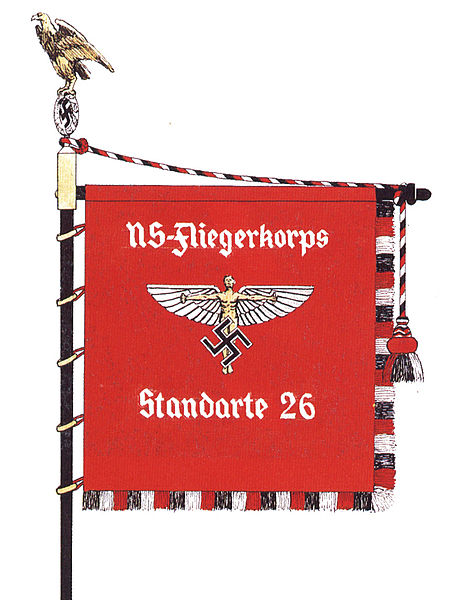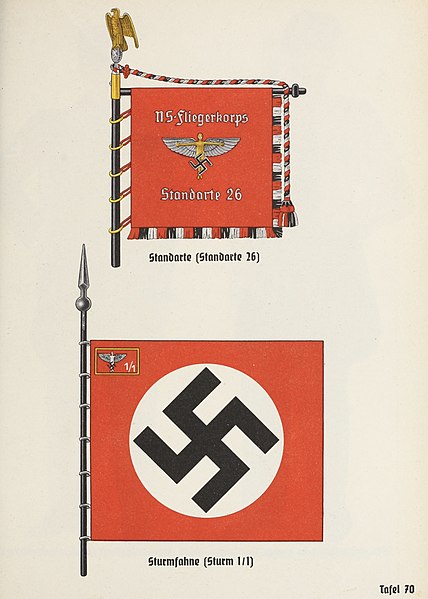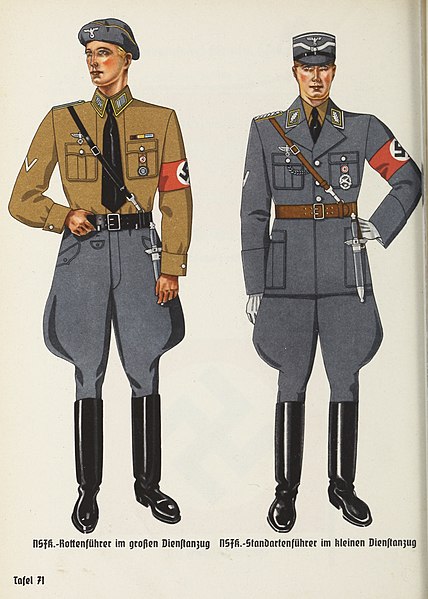Standartenführer was a Nazi Party (NSDAP) paramilitary rank that was used in several NSDAP organizations, such as the SA, SS, NSKK and the NSFK. First founded as a title in 1925, in 1928 it became one of the first commissioned NSDAP ranks and was bestowed upon those SA and SS officers who commanded a unit known as a Standarte, a unit equivalent to an army battalion and comprising 300–500 personnel.
Hermann Fegelein as an SS-Standartenführer
National Socialist Flyers Corps
The National Socialist Flyers Corps was a paramilitary aviation organization of the Nazi Party.
NSFK Standarte
Image: Organisationsbuc 00nati 0 orig 0711 ORGANISATIONSBUCH DER NSDAP 1943 Tafel 70 Das Nationalsozialistische Fliegerkorps NSFK. Standarte Sturmfahne Public domain CROPPED
Image: Organisationsbuc 00nati 0 orig 0712 ORGANISATIONSBUCH DER NSDAP 1943 Tafel 71 Das Nationalsozialistische Fliegerkorps NSFK. Rottenführer im grosse Dienstanzug, Standartenführer im kleinen Dienstanzug Public domain CROPPED
Image: Organisationsbuc 00nati 0 orig 0713 ORGANISATIONSBUCH DER NSDAP 1943 Tafel 72 Das Nationalsozialistische Fliegerkorps NSFK. Standartenführer im Ausgehanzug, Sturmbannführer im Abendanzug Public domain CROPPED





